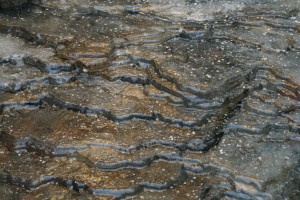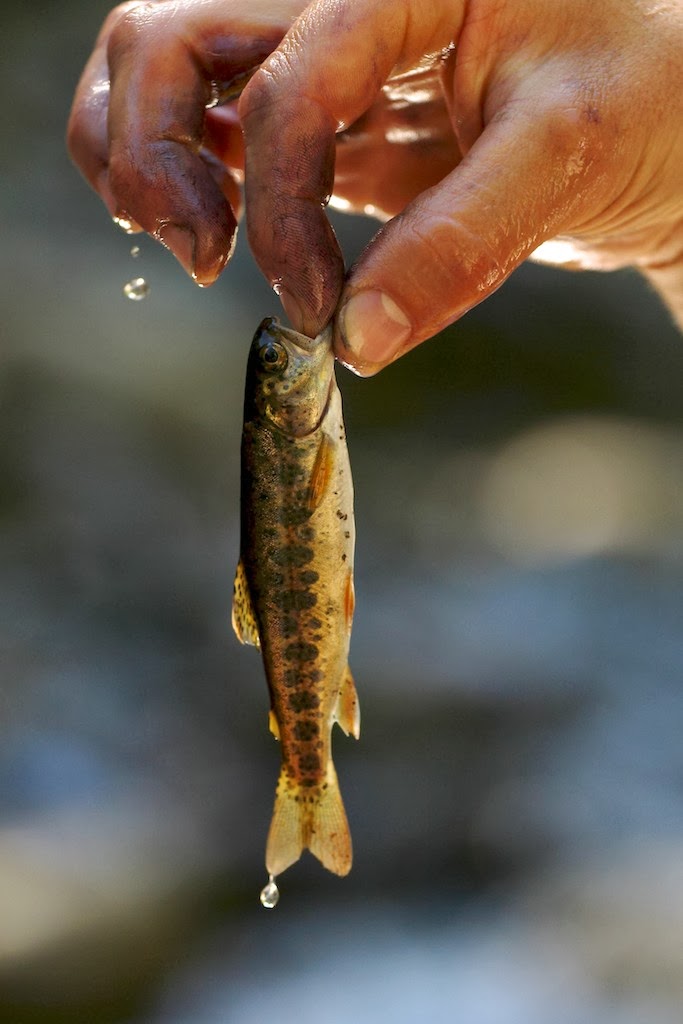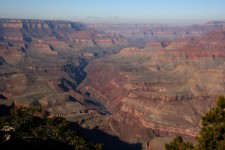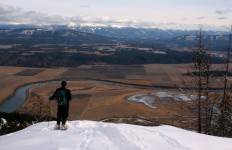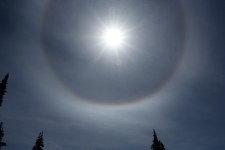Ice skating. Ice fishing. Skiing. Sledding. What would winter be like without snow and ice?
When the temperature drops below 32 degrees Fahrenheit the landscape turns into a winter wonderland of snow and ice. Most of our winter activities involve some form of ice.
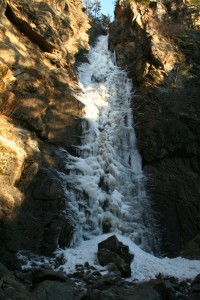
The ice of Copper Falls looks white because the high concentration of air bubbles within the ice scatters all wavelengths of light
Ice, the solid state of water, is truly unique. All other solids sink in their liquid counterpart but ice floats. Can you imagine if ice sank? Lakes, oceans and rivers might have year-round ice on the bottom which would reduce the number of organisms living within those bodies of water.
Instead ice floats because it is less dense than water and takes up nine percent more room than water. To picture this lets go to the molecular level of water, H20. When water cools the molecules slow down and when they slow down enough the molecules are able to bond together.
When water molecules bond at normal atmospheric pressures they form a hexagonal lattice (think 3D chicken wire). This hexagonal lattice actually keeps water molecules farther apart than when they are free flowing in liquid–making the water less dense and more spacious.
For example, if a crowd of people had to hold hands with their arms straight out they would take up more space than if they were moving about with their arms by their sides.
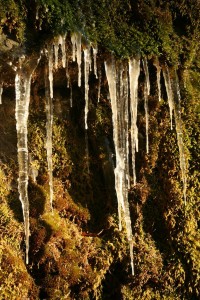
Ice melts at 32 degrees Fahrenheit but water has to be colder than 32 degrees to initiate ice formation
Without this hexagonal lattice, ice skating and ice fishing would be extremely difficult because there would be no ice at the surface unless the entire lake was frozen solid.
The top layer of water isn’t the only portion of the lake that cools before freezing. Water is most dense at 4 degrees Celsius (39.2 degrees Fahrenheit). As the top layer of water cools (because of the colder air temperatures) to 4 degrees Celsius it sinks because it is more dense than the warmer water below. Thus the less dense, warmer water rises to the surface until is cools enough to sink. Only when the entire lake is at 4 degrees Celsius does freezing begin at the surface.
The clear layer of glass-like ice on lakes offers a glimpse into the underwater world.
However, ice isn’t clear all the time. Sometimes there are white bubbles encased within or in the case of glaciers the ice is blue. The difference in color is a result of which wavelengths of light we see.
Ice is a poor absorber of light so a thin section of pure ice (no air bubbles) appears clear because the light passes through. If air bubbles are present, they scatter the sunlight in all directions which causes us to see white.
We see a white winter wonderland when the landscape is blanketed with snow. Snow is a conglomeration of ice crystals. When sunlight hits the irregular surfaces of ice crystals, it scatters in all directions which results in us seeing white snow.
Then there is vivid blue glacial ice. Glacial ice is different from the everyday winter ice on lakes because it is more compact and contains impurities such as rocks and soil. Glacial ice is more dense and compact because the weight of new snow and ice compresses the older layers. Thus when sunlight enters glacial ice the ice absorbs every color of the spectrum except blue so blue is what we see.
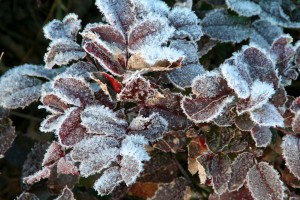
When temperatures drop below freezing, frost is the result of water vapor in the air directly changing to ice (a process known as deposition)
The scattering of light is the main reason why most of the ice we see during winter is white. From falling snowflakes to frost on trees to air bubbles trapped in lake ice, without ice our winter wonderland wouldn’t be white.

